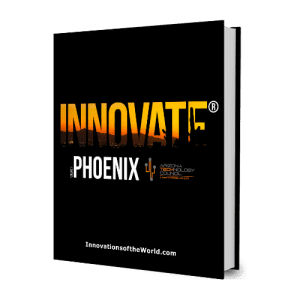“All men dream; but not equally. Those who dream by night in the dusty recesses of their minds wake in the day to find that it was vanity: But the dreamers of the day are dangerous men, for they may act their dreams with open eyes, to make it possible.” ― T.E. Lawrence, it’s in his Seven Pillars of Wisdom
Introduction
In the late 1960’s an ASU architecture class led by Dean James Elmore was charged with envisioning a transformation of the long-dry riverbed—the “Rio Salado”– that etched through the Valley of the Sun. It would remain a conversation and aspiration for decades, always a grand idea. The concept failed at the ballot box regionally in the late ‘80’s, yet visionary citizens in Tempe voted “yes”, and the dream of “a river once more” was kept alive. In 1994, a new young mayor was elected on a platform that called for Rio Salado to “become a reality for future generations.”
Perspective on Innovation
Making community dreams a reality was always the aspiration of Neil Giuliano when he became the youngest person ever elected mayor of Tempe, Arizona, in spring of 1994. The challenge was providing an innovative, visionary approach to public policy and major community initiatives in a way that didn’t get too far out ahead of what was already considered a somewhat progressive community of 165,000 residents within the Phoenix metropolitan region. Giuliano’s vision, and his desire and willingness to champion significant long-term initiatives, required focus, talented staff, and regular interaction with the community. It was that approach to mayoral leadership that would ensure clear articulation of the public value and strong community support over time for the heavy lifting ahead. That heavy lifting, to Giuliano, was simply a “must-do” for the future of Tempe. The nearly 40 square-mile city was landlocked, surrounded by other cities, and could not grow further and further out into the desert. At the time, Tempe had more miles of regional freeway cutting through it and around its’ borders than any other city in the region, both an economic upside and a transportation challenge. Nearly one-sixth of Tempe’s landmass was comprised of an abandoned and dry river bottom, the Salt River/Rio Salado and surrounding lands, entirely unproductive for the community both financially and from a quality of life standpoint. Seizing the opportunity to link several community goals together, Giuliano aligned political and community capacity for three: a Tempe and then regional transportation plan that would include implementation of regional light rail, constructing Tempe Town Lake in the dry river bottom as an economic development and urban revitalization effort, and creation of substantial park and open space for community events, recreation and a center for the arts on the shore of the new lake. The voters were asked to fund the multi-modal transportation program in September of 1996. A publicprivate partnership was designed to enable construction of the 2-mile long Town Lake in the river bottom at the north end of downtown Tempe, commenced in the fall of 1997 and completed in 1999. And in May 2000 the voters approved funding a center for the arts which would be sited on the southwest end of the new lake.
It would take years, especially given the Great Recession, for the full vision of the initiatives Giuliano led to truly come to fruition. By the time regional light rail took its first trip connecting downtown Tempe to downtown Phoenix, before the Tempe Center for the Arts was opened, and before the successful scale of commercial development along Tempe Town Lake had been completed, Giuliano’s ten-year tenure (1994-2004) as mayor of Tempe had been completed. As he left office he was quoted as saying: “We did a lot of dreaming together, and then worked hard and long to create a better future of our community. We should feel good about what we accomplished for all those who will follow”.
Why Phoenix?
The greater Phoenix region was settled by people bold enough to dream beyond realities of the geography and environment of their time. That drive still propels Phoenicians to think big. The region has the right mix of public and private sector leaders willing to envision and create a sustainable reality that will unfold and shape the future.
The Future of Innovation
The jobs of tomorrow will be vastly different than today; many not yet conceived. In order for Phoenix to grow as a competitive economy, it is imperative leaders work together to ensure equitable access to quality education and identify an expanded pipeline for a workforce willing and prepared to tackle problems that are not yet foreseen.















